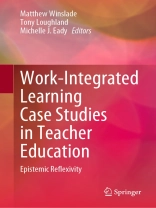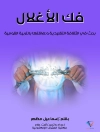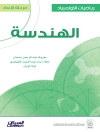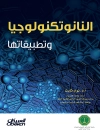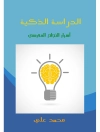This book focuses on the emerging area of partner-driven work-integrated learning inclusive of university or industry stakeholder development, and the integration of these two major stakeholders. It explores the significant interrelationship between university and school needs in this area of research. It uses a cross-institutional approach and focuses on local communities that educational providers interact with, to highlight and discuss the issues identified in various case studies. By doing so, this book aims to create a community of practice that explores work-integrated learning from an integrated stakeholder perspective, and develops a working model to extend existing understanding in this area through integrating the ideas explored in the various chapters.
قائمة المحتويات
Preamble 1 Why is this Text Important?.- Preamble 2 How WIL Changes Graduate Employability in the Context of Education.- SECTION 1 Background and Theoretical Perspectives.- 1 Introduction – Meaning and Purpose.- 2 The Theory of Work Integrated Learning in Teacher Education.- 3 The Importance of Authentic Learning Experiences through WIL Opportunities.- 4 A Systematic Review: Work Integrated Learning and School Partnerships.- SECTION 2 Research.- 5 Supporting the development of highly effective classroom practice.- 6 Growing into the profession: promoting teacher education students’ subjectification through critical reflection whilst on professional experience.- 7 A shared responsibility – Working together to change culture: A fresh take on the university /school partnership approach.- 8 In-school coordinators and mentor teachers roles and responsibilities: A snapshot of current approaches to professional experience in one Australian school.- 9 SECTION 3 Practice.- 10 From Best Practice to Next Practice: Preparing pre-service teachers for innovative, agile learning environments.- 11 Importance of Data on Teaching and Learning (Data days for Pre-service teachers at Cambridge Park High School).- 12 Supporting Regional and Remote Primary Education Students on WIL Placement Using Video Technology – A Classroom Teacher’s perspective.- 13 Video as a medium for enhancing initial teacher education and professional learning in the area of classroom practice.- 14 The role of the PEXC in transitioning the TES to the profession: Moving beyond a sink or swim discourse.- 15 Developing a model of ‘vertical’ professional mentoring across the teaching continuum: the case of the Burwood Girls HS-UTS PEx Hub partnership.- 16 Examining a collaborative model for PST assessment during a final PEX placement.- 17 The professionalization of the placement coordinator: Practice and potentials.- 18 Creating A Core Subject That Requires Authentic Community Service Learning – Process and Framework.- 19 The School – University partnership: Reciprocity from an academics perspective.- 20 Schools and Universities working together to address the shortage of teachers in rural and remote locations: Supporting metropolitan based students to go bush.- 21 SECTION 4 Partnerships.- School and university perspectives: creating professional development opportunities through WIL.- 22 Building Mentoring Relationships: Sustaining Professional Teacher Capacity.- 23 Why school partnerships are vital for thriving education faculties.- 24 Quality control and professional teaching placements: The “at risk” decision-making, collaborations and support processes.- 25 Supporting Classroom Teachers Who Supervise Education Students on WIL Placements – A Case Study.- 26 Setting up for Success: the Bonnyrigg Heights Public School and the University of Technology Partnership.- 27 Teaching for the Future Professional Partnership: The PEX Hub School Perspective.- 28 Conclusions and synthesis of chapters.- Postscript.- 29 Professional Experience in times of COVID-19.
عن المؤلف
Associate Professor Matthew Winslade is the Associate Head of Education, (Workplace Learning and Partnerships) for the Faculty of Arts and Education at Charles Sturt University, Australia. Matt has a strong educational background with over twenty years of teaching experience. Prior to moving into the tertiary sector, he was both Head Teacher in the state system and Director of Sport in the Association of Independent Schools. Matt has been awarded an Australian Council of Deans of Education award through the Australian Association for Research in Education and has received a citation for outstanding contribution to student learning. Associate Professor Tony Loughland is Academic Director of Professional Experience in the School of Education at the University of New South Wales, Australia. Tony is an experienced educator who likes to work from practice to theory and back again. His research interests lie in teacher professional learning across the continuum from graduate tolead teacher. Tony currently leads a project investigating the feasibility of a responsive, needs-based staffing system for New South Wales. He has an extensive publication and practice track record in work-integrated learning in teacher education.
Michelle J. Eady is Associate Professor in the School of Education at the University of Wollongong, Australia. Michelle has been awarded an Australian Office of Teaching and Learning (OLT) teaching excellence citation. Her current research focuses on the Scholarship of Teacher and learning (SOTL), particularly the preparation of quality primary school teacher through work-integrated learning (WIL) opportunities. Michelle is Passionate Advocate for WIL and is currently developing a working framework to assist universities and their partners to work together to build the professional competencies of students.
